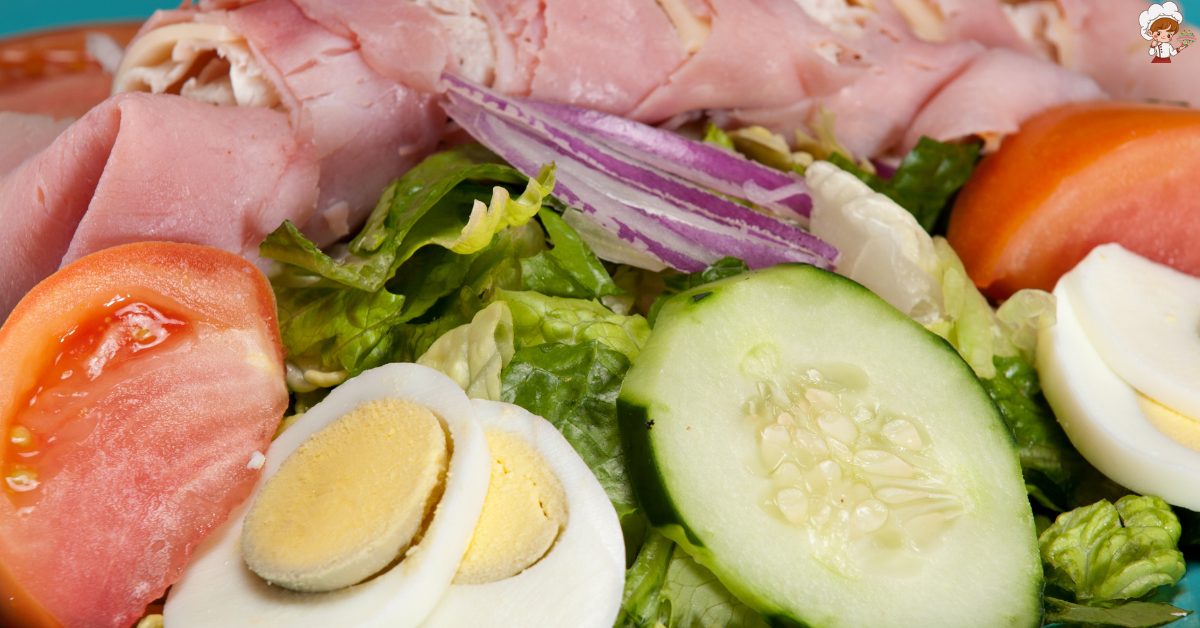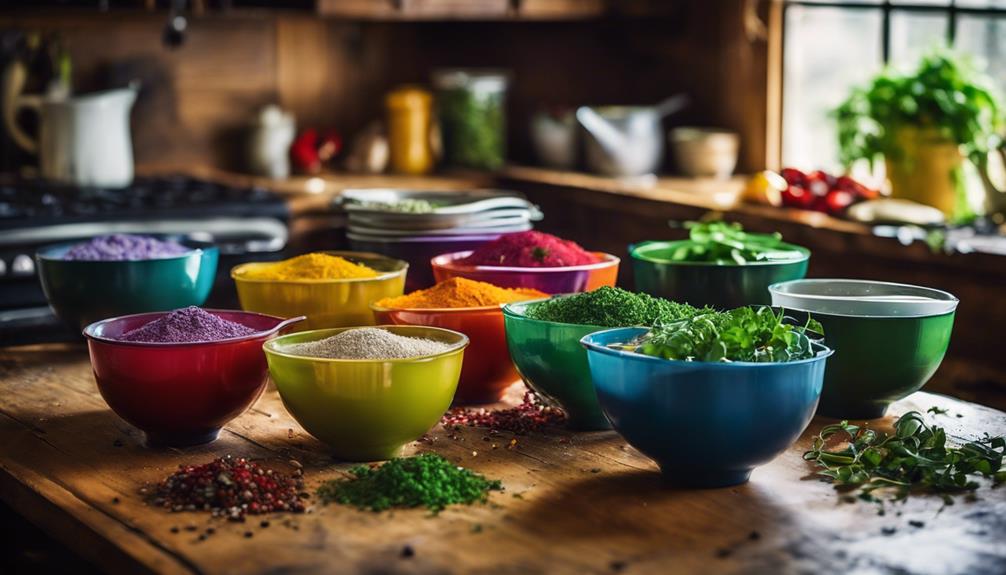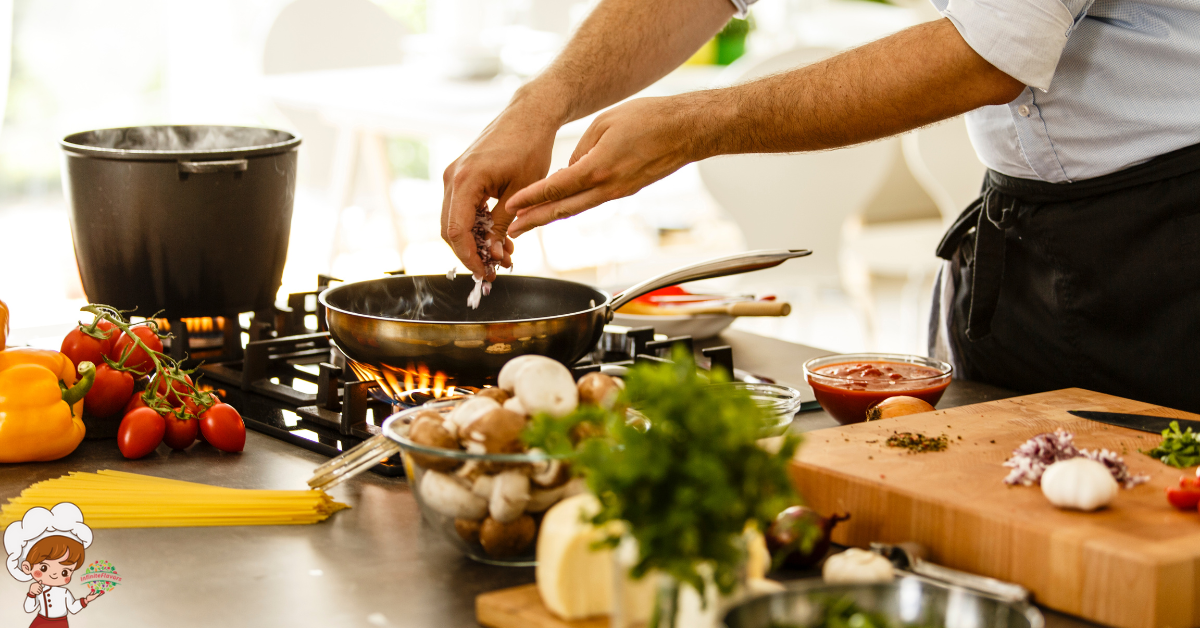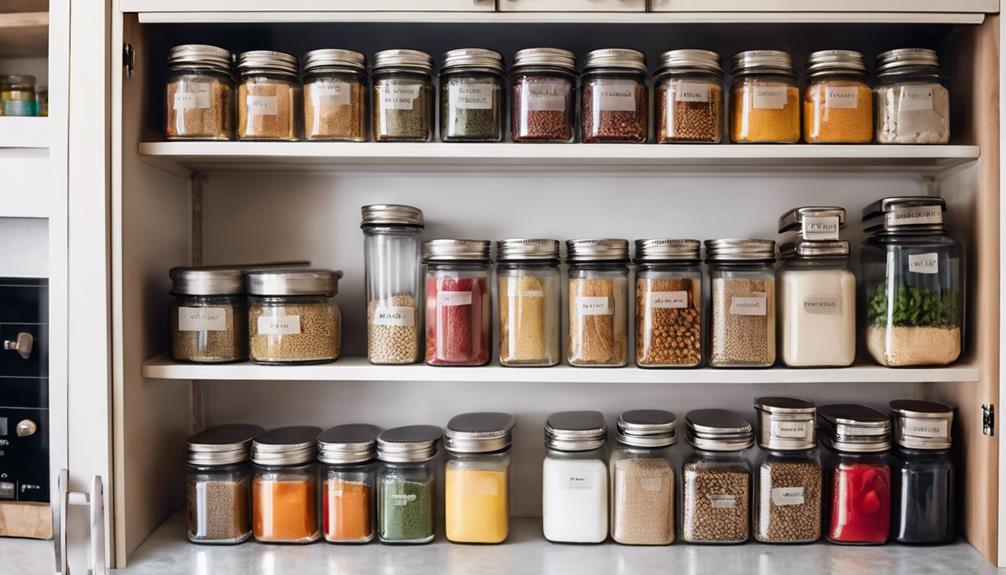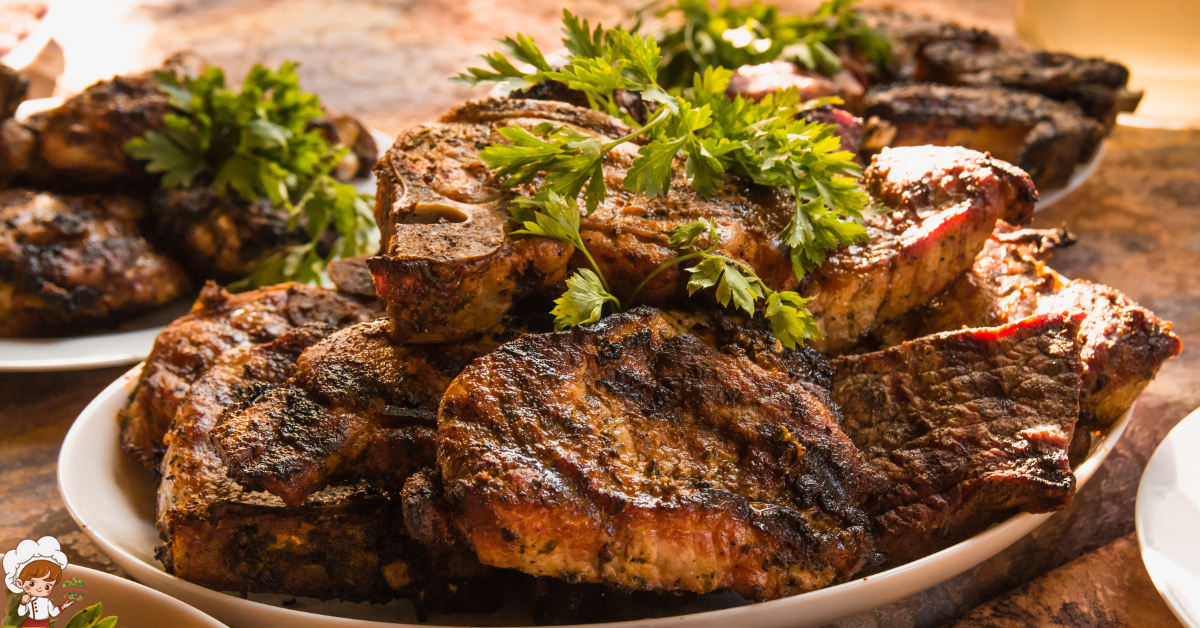The Best Timers For Multi-Step Cooking Processes
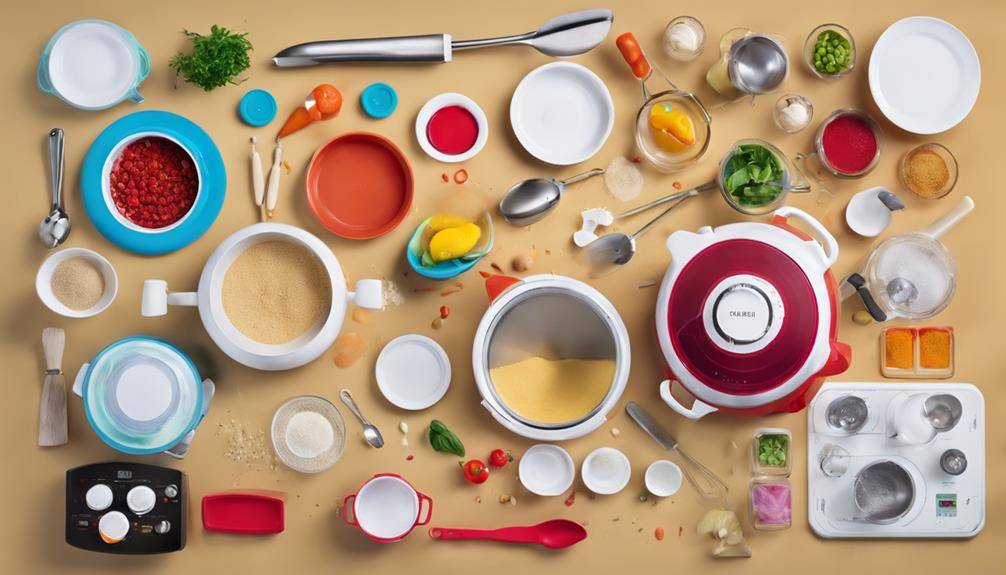
Timers For Multi-Step Cooking Processes are essential for managing multi-step cooking processes, keeping your dishes on track and ensuring everything’s ready at the same time. You can choose from digital timers with multiple countdown functions or mechanical ones for a more traditional touch. Setting them up correctly helps you allocate specific times for each step, enhancing your cooking efficiency. Syncing multiple timers allows you to focus on several dishes without losing your rhythm. By avoiding common timing mistakes, you’ll improve your culinary outcomes. Stick around, and you’ll uncover more tips to elevate your cooking game and keep your kitchen organized.
Importance of Timing in Cooking
Timing is essential in cooking, and you often can’t afford to overlook it. Cooking precision is vital for success, as every second can influence the outcome of your dish. When you master meal coordination, you’ll find that the key to a flawless dinner lies in your ability to manage multiple tasks simultaneously. Your multitasking skills will shine when you can keep track of various cooking times, ensuring that each element is ready to serve at the same moment.
Adhering to recipes isn’t just about following the steps; it’s about understanding the role of culinary timing in flavor development. For instance, if you sauté vegetables for too long, they’ll lose their crunch and vibrant color, impacting the dish’s overall appeal. To avoid such pitfalls, focus on ingredient readiness. Preparing everything in advance allows you to optimize your process, making it easier to focus on timing.
Efficiency improvement comes from honing your time management skills. By allocating specific time slots for each cooking phase, you can streamline your efforts and enhance your culinary experience. The right timing can elevate your dishes, leading to better flavors and textures that delight the palate.
Ultimately, mastering the importance of timing in cooking not only sets you up for success but also enriches your time spent in the kitchen. You’ll discover that the joy of cooking comes not just from the final product but from the skillful dance of timing and preparation that makes it all possible.
Types of Timers
When managing multiple cooking tasks, having the right tools can make all the difference. Different types of timers can enhance your kitchen experience, allowing you to focus on various cooking techniques without stress. You’ll find that timer reliability is essential, ensuring you don’t accidentally overcook your dish.
Consider the various timer styles available. Digital timers are popular for their precise timer functions and user-friendly interfaces. They often come with customizable features, letting you set multiple alarms for different cooking rhythms. If you prefer a more traditional approach, mechanical timers can add a charming aesthetic to your kitchen gadgets while still providing important timing capabilities.
Look for timer customization options that cater to your specific needs. Some timers allow you to set countdowns for each step in a recipe, while others have presets for common cooking times. This can be a game-changer when juggling multiple dishes.
Don’t forget about timer aesthetics—choose one that matches your kitchen’s decor. A visually appealing timer can enhance your cooking space, making it more enjoyable to cook.
Ultimately, the best timer for you will depend on your personal preferences and cooking style. Invest a little time in exploring the variety of timer features available, and you’ll find the perfect fit to help streamline your cooking process. With the right timer by your side, you’ll master the art of multi-step cooking with ease.
Digital Vs. Mechanical Timers
Often, home cooks find themselves debating whether to use digital or mechanical timers for their kitchen tasks. Each option comes with its own set of benefits and challenges, making it essential to weigh your preferences and cooking style before choosing one.
Digital timers offer several benefits that can enhance your cooking experience. For starters, they usually feature large, easy-to-read displays, allowing you to check the remaining time at a glance. Many digital timers also come with multiple countdown functions, which can be handy when juggling various dishes. Plus, they often have built-in alarms that you can customize, ensuring you won’t miss the perfect moment to check on your meal. These digital advantages make them particularly appealing for busy home cooks.
On the other hand, mechanical timers have their own set of drawbacks. While they can be straightforward and require no batteries, they often lack the precision of their digital counterparts. The dial may be difficult to read, especially if you’re working in a dimly lit kitchen. Additionally, you might find that the maximum time limit on mechanical timers is often shorter, which can be limiting when tackling complex recipes.
Ultimately, the choice between digital and mechanical timers boils down to your cooking habits and personal preferences. By considering the digital advantages and mechanical drawbacks, you can make a more informed decision that best suits your culinary needs.
Setting Up Your Timers
When it comes to setting up your timers, choosing the right one is essential for a smooth cooking experience. You’ll want to think about timing intervals effectively to avoid any overlaps or missed cues. Plus, syncing multiple timers will help you manage each step of your recipe flawlessly.
Choosing the Right Timer
Choosing the right timer can make a significant difference in your multi-step cooking process. You’ll want to reflect on various timer features that suit your cooking style. For instance, some timers offer multiple countdowns, allowing you to set different time intervals for each step of your recipe. Look for timers with clear displays and easy-to-use buttons, as you don’t want to fumble around while your dish is on the line.
Timer reliability is vital, too. You need a timer that won’t fail you halfway through cooking. Opt for models with a good track record or seek recommendations from fellow cooks. Digital timers are often precise and reliable, but don’t overlook the traditional mechanical timers, which can be just as dependable if properly maintained.
Additionally, think about where you’ll place your timer in the kitchen. It should be easily visible and within reach as you juggle multiple tasks. By choosing a timer that combines the right features with dependable performance, you’ll streamline your cooking process, ensuring that you stay on track and your meals turn out perfectly every time.
Timing Intervals Effectively
To set up your timers effectively, start by breaking down your recipe into its individual steps and assigning specific time intervals to each one. This approach enhances your cooking precision and guarantees that each component of your dish gets the attention it deserves. Use timing techniques like setting a timer for prep tasks, cooking times, and resting periods.
For instance, if you’re roasting vegetables and cooking pasta, assign each task a specific timer. You’ll want to make certain you don’t overlook any step, especially when juggling multiple dishes. The key is to anticipate how long each process takes and adjust your timers accordingly.
Don’t forget to account for multitasking—some steps can overlap. If a dish requires simmering, set a timer to remind you to check on it while you prepare other ingredients. This proactive approach allows you to maintain momentum in the kitchen.
Syncing Multiple Timers
Managing multiple timers can greatly streamline your cooking process, especially when handling several dishes at once. To make the most of your time, you’ll want to employ effective timer synchronization techniques. Start by determining the overlapping cooking intervals for each dish. For example, if one dish takes 20 minutes and another takes 30, you can set your timers to guarantee they finish simultaneously.
When setting your timers, stagger them based on cooking times. You can begin with the dish that takes the longest, setting its timer first. As it cooks, set the timer for the next dish to start when there’s only a few minutes left on the first timer. This way, you’ll avoid chaos in the kitchen, keeping everything organized and on track.
Consider using digital timers or cooking apps that let you label each timer according to the dish. This can help you quickly identify which timer corresponds to what. By using these techniques, you’ll not only keep your meals on schedule but also reduce stress, allowing you to enjoy the cooking process. With practice, syncing multiple timers will become second nature, making your cooking more efficient and enjoyable.
Using Multiple Timers
Using multiple timers can greatly streamline your cooking process, helping you manage several dishes at once. With various timer apps and tools available, you can coordinate cooking steps more efficiently and guarantee nothing gets overcooked. Let’s explore the benefits of using multiple timers and how they can elevate your meal prep.
Benefits of Multiple Timers
Although cooking can be a delightful experience, juggling multiple dishes often feels overwhelming. Using multiple timers can greatly enhance your cooking efficiency and streamline your meal prep. With each timer set for different dishes, you’ll improve your time management, ensuring that everything cooks perfectly and at the right moment.
The timer benefits extend beyond just keeping track of cooking times. You’ll find that it enhances your multitasking skills, allowing you to focus on different tasks without losing track of what’s happening in the kitchen. By sticking to your timers, you’ll also boost recipe adherence, which is vital for achieving those enhanced flavors that elevate your meals.
Additionally, employing multiple timers makes it easier to coordinate cooking times, leading to stress reduction. You won’t be racing against the clock or second-guessing when to check on your dishes. Instead, you can enjoy the process, confident that you’re in control. Ultimately, using multiple timers not only simplifies your cooking experience but also helps you create delicious meals with ease, making every cooking session more enjoyable and rewarding.
Timer Apps and Tools
In the kitchen, having the right timer app or tool can make all the difference when you’re cooking multiple dishes. You’ll want an app that offers robust timer features to help you manage everything seamlessly. Look for apps that allow you to set several timers at once, so you can keep track of each dish without losing your mind.
Many popular timer apps come with customizable alerts, letting you choose sounds that suit your taste. You might also appreciate features like countdowns and the ability to label each timer, which can save you time and confusion.
When searching for the best options, don’t forget to check out app reviews. Other users often share their experiences, highlighting any bugs or fantastic features you might overlook.
Some apps even include meal planning tools, so you can integrate your timers with your cooking schedule. This way, you’ll always know what’s next and won’t risk overcooking anything. Ultimately, the right timer app or tool can transform your multi-step cooking processes into a more enjoyable experience, giving you the confidence to tackle any recipe.
Coordinating Cooking Steps
Managing multiple cooking tasks can be overwhelming, but coordinating your cooking steps with several timers gives you a clear advantage. By using multiple timers, you can enhance your time management and streamline your cooking process. Start by identifying the different components of your meal. For instance, if you’re roasting vegetables while simmering a sauce, set separate timers for each task.
This approach not only helps you keep track of cooking times but also boosts your cooking efficiency. With one timer for the veggies and another for the sauce, you’ll know exactly when to stir, check, or adjust the heat without losing focus.
You can even use different sounds or colors for each timer to make it easier to differentiate them at a glance.
As you gain experience, you’ll find it becomes second nature to coordinate your cooking steps this way. You’ll be able to juggle multiple dishes, ensuring everything comes together perfectly without the stress of overcooking or burning. So, embrace multiple timers and watch your culinary skills improve through better organization and time management!
Timer Apps for Cooking
Many cooks find timer apps vital for streamlining their multi-step recipes. With the variety of tasks involved in cooking, using a timer app can greatly enhance your efficiency and enjoyment in the kitchen. These apps allow you to set multiple timers, guaranteeing you keep track of each step without feeling overwhelmed. As you chop vegetables, sauté ingredients, or simmer sauces, you’ll appreciate having cooking reminders right at your fingertips.
The beauty of timer apps lies in their flexibility. You can customize timer notifications, adjusting sounds and alerts to suit your preferences. Whether you prefer a gentle chime or a loud buzz, you can choose what works best for you. This way, you can stay focused on your cooking without constantly glancing at the clock.
Many apps also allow you to label each timer, making it easy to remember what needs attention next. For instance, you might set one timer for boiling pasta while another counts down for baking a cake. This feature not only keeps you organized but also guarantees you don’t overcook or undercook any dish.
Additionally, some timer apps sync with your grocery lists or recipes, streamlining the entire cooking process. With everything in one place, you save time and reduce the risk of missing vital steps. Investing in a quality timer app can transform your cooking experience, making it far more enjoyable and less stressful.
Synchronizing Cooking Steps
Synchronizing cooking steps is key to executing a successful multi-step recipe. When you manage your time effectively, you’ll find that cooking becomes not only easier but also more enjoyable. To achieve cooking efficiency, start by breaking down the recipe into distinct steps. Identify which components can be prepared simultaneously. For example, while a sauce simmers, you can chop vegetables or marinate proteins.
Using timers can greatly enhance your ability to synchronize these steps. Set timers for each individual task, and don’t hesitate to adjust them as needed. If you know a certain ingredient takes longer to cook, start that step first. This proactive approach allows you to keep everything on track without feeling rushed.
Another tip is to prep ingredients in advance. Measure out spices, chop vegetables, or even marinate proteins the night before. This way, when you step into the kitchen, you’ll maximize your cooking efficiency. You won’t have to scramble to gather ingredients, allowing you to focus on timing each step perfectly.
Common Timing Mistakes
Timing mistakes can derail even the best-planned multi-step recipes. One of the most common errors is overcooking vegetables. You might think they need extra time to soften, but that can lead to mushy, unappetizing results. It’s vital to keep an eye on them, especially if they’re part of a dish that requires precise timing.
Another frequent issue is undercooking pasta. If you pull it off the heat too soon, you’ll end up with a chewy texture that ruins the entire dish. Make certain to test it a minute or two before the package suggests.
Timing meat can be tricky as well. If you don’t allow enough time for it to rest after cooking, you’ll lose those flavorful juices. On the flip side, keeping it in the oven too long can lead to dry, tough meat.
Baking precision is essential, too. Forgetting to adjust your timer can result in burnt cookies or cakes. Similarly, don’t overlook the importance of seasoning intervals. Adding salt or spices too early or late can throw off your dish’s balance.
When preparing sides, coordinate their cooking times with the main dish to guarantee everything’s ready simultaneously. Reheating leftovers is another area where timing matters; too long in the microwave can turn a tasty meal into a rubbery disaster. Finally, when cooling desserts, be mindful of how long you leave them out—too long can cause sogginess. By staying aware of these timing mistakes, you’ll create more successful meals.
Tips for Effective Timing
To master effective timing in multi-step cooking, prioritize your cooking steps to guarantee everything flows smoothly. Using multiple timers can help you keep track of different dishes without missing a beat. With these strategies, you’ll streamline your cooking and avoid chaos in the kitchen.
Prioritize Cooking Steps
Prioritizing cooking steps can streamline your kitchen efforts and guarantee everything’s ready at the same time. When you organize your cooking sequences, you’ll create a smooth flow that makes meal preparation much more efficient. Start by identifying which items require the most time and attention. For example, if you’re roasting vegetables, begin that process first, as it typically takes longer than boiling pasta.
Next, look for tasks that can overlap. While your vegetables roast, you can chop ingredients for your sauce or start boiling water. This approach keeps everything moving and reduces idle time. Always consider the order in which items need to be served. If a dish is best served hot, plan to finish it last so it’s fresh and steaming when you sit down to eat.
Also, pay attention to resting times. Proteins like chicken or steak often benefit from resting after cooking, which can be a perfect time to wrap up any remaining tasks. By prioritizing your cooking steps, you’ll ascertain that all elements of your meal come together harmoniously, making every dining experience enjoyable and satisfying.
Use Multiple Timers
Using multiple timers can greatly enhance your cooking efficiency, ensuring that you never miss a beat in the kitchen. By utilizing different timers for various tasks, you can master timer management and streamline your cooking process. For instance, set one timer for boiling pasta and another for roasting vegetables. This way, you can focus on each task without the fear of overcooking anything.
Consider using different devices or apps for your timers. A kitchen timer for stovetop tasks and your phone for oven-related ones can keep you organized. Color-coding your timers can also help you quickly identify which timer corresponds to which dish.
You’ll find that having multiple timers allows you to multitask effectively, as you can start prepping the next dish while keeping an eye on the current one. Plus, it reduces the stress of trying to remember when to check on everything.
With effective timer management, you’ll not only boost your cooking efficiency but also enjoy a more relaxed cooking experience. So, embrace the power of multiple timers and watch your culinary skills flourish!
Enhancing Flavor With Timing
How can timing elevate the flavors in your cooking? The secret often lies in the art of timing precision. When you add ingredients at just the right moment, you can achieve a deeper flavor infusion that transforms your dish from ordinary to extraordinary. For instance, adding herbs too early can lead to a loss of their vibrant qualities. Instead, consider incorporating them towards the end of cooking to maintain their fresh taste.
Cooking techniques like sautéing or roasting also rely heavily on timing. If you overcook vegetables, they lose their texture and flavor. By setting a timer for each step, you guarantee that each element is perfectly cooked. This not only enhances the dish’s overall taste but also its visual appeal.
Marinating is another area where timing is vital. A short marination can impart a subtle flavor, while a longer soak allows for a more intense flavor infusion. Knowing when to stop can make all the difference in your culinary results.
Moreover, don’t forget about resting times. Allowing meats to rest after cooking helps redistribute juices, resulting in a more flavorful bite.
Frequently Asked Questions: Timers For Multi-Step Cooking Processes
Can Timers Be Used for Non-Cooking Tasks?
Absolutely, you can use timers for non-cooking tasks! By implementing productivity techniques and effective time management, you’ll keep yourself focused, break tasks into manageable chunks, and improve your overall efficiency in daily activities.
How Do I Choose the Right Timer for My Kitchen?
To choose the right timer for your kitchen, consider digital timers for accuracy and countdown features, or mechanical timers for simplicity. Think about your kitchen organization and multitasking efficiency to find the best fit.
Are There Any Timers Specifically Designed for Baking?
Yes, there are timers specifically designed for baking. Look for baking timers with digital displays that offer precise countdowns. These features help you monitor multiple recipes, ensuring perfect results every time you bake.
Can I Use My Phone as a Timer While Cooking?
Yes, you can definitely use your phone as a timer while cooking. With various timer apps and phone features, you’ll find it easy to set multiple timers for different dishes simultaneously. It’s super convenient!
What if My Timer Runs Out Before I’m Ready?
If your timer runs out before you’re ready, don’t panic! Use timer reset strategies to adjust your cooking times, and manage cooking overlap by prioritizing tasks to guarantee everything finishes simultaneously.
Conclusion
Incorporating timers into your cooking routine can elevate your culinary skills and guarantee delicious results. By understanding different types of timers and how to use them effectively, you’ll stay organized and avoid common timing mistakes. Remember, timing isn’t just about keeping track; it’s a vital element in enhancing flavors and textures. So, embrace the power of precise timing, and watch your dishes transform into mouthwatering masterpieces every time you step into the kitchen!




